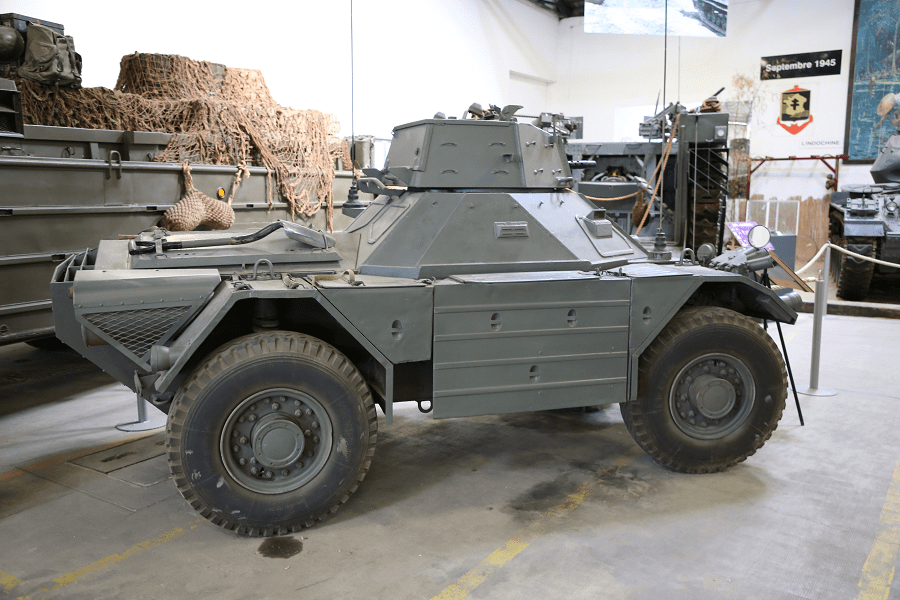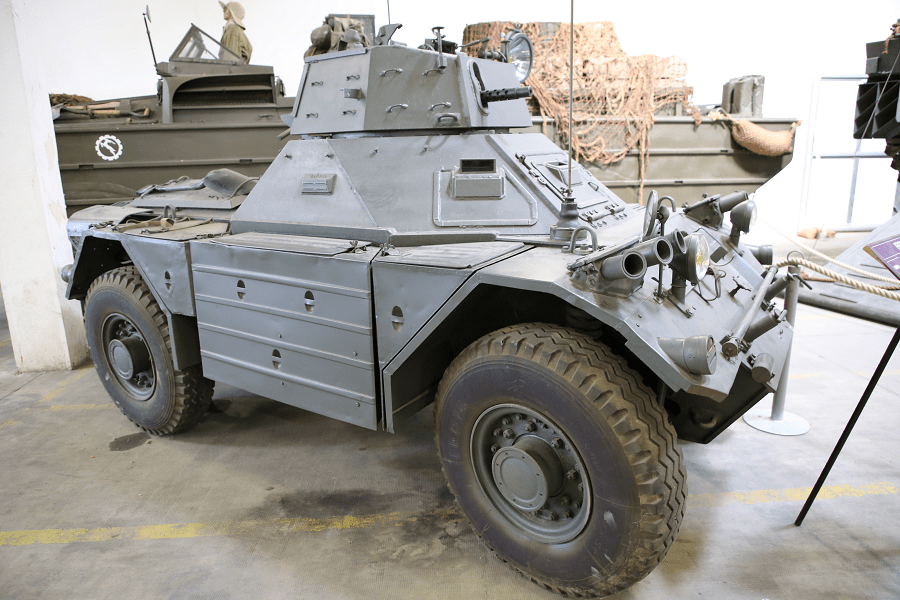The Ferret armoured car, also commonly called the Ferret scout car, is a British armoured fighting vehicle designed and built for reconnaissance purposes. The Ferret was produced between 1952 and 1971 by the UK company Daimler. It was widely used by regiments in the British Army, as well as the RAF Regiment and Commonwealth countries throughout the period.
The Ferret was developed in 1949 as a result of a British Army requirement issued in 1947. ‘Light reconnaissance cars’ existed during the Second World War, notably the Daimler Dingo.
Given its experience with the successful Dingo (6,626 produced and one of two British AFVs produced throughout WWII) Daimler was awarded a development contract in October 1948, and in June 1950 the first prototype of the Car, Scout, 4×4, Liaison (Ferret) Mark 1 was delivered.
Designated the FV 701(C), it was one of several versions resembling the original Daimler scout cars, and represented the basic model Ferret. This shared many similar design features with the Dingo, notably the H form drive train in which a central differential eliminates loss of traction due to wheel-slip, and parallel drive shafts considerably reduced the height of the vehicle (roughly equivalent to that of a tracked AFV) compared to conventional armoured car designs.
Like the Daimler scout car, the Ferret suspension consisted of pairs of transverse links and single coil springs, the wheels driven by Tracta constant-velocity joints, but the Ferret benefited from epicyclic reduction gears reducing transmission torque loads, essential with the six cylinder 4.26 litre water-cooled Rolls-Royce B.60 petrol engine. Connected by a fluid coupling to a pre-selector five speed epicyclic gearbox, all gears available in reverse, in its original form, the Ferret produced 116 bhp (87 kW) at 3,300 rpm and 129 bhp (96 kW) at 3,750 in its final form.
This improved power-to-weight ratio, longer wheelbase (2.29 m (7.5 ft) compared with the Dingo’s 1.98 metres (6.5 feet)) and the fitting of larger 9.00×16 run flat tyres increased speed and mobility over broken ground.
Compared with the Daimler Dingo and Canadian Ford Lynx, the Ferret featured a larger cabin, directly mounted to the hull (the Ferret is much noisier than Dingo, lacking a monocoque body).
6–16 mm (0.24–0.63 in) steel plate protects the crew from shell splinters at most angles except directly overhead because the basic vehicle was open-topped and unarmed, with the exception of six forward-firing grenade launchers fitted to the hull over the front wheels (normally carrying smoke grenades), a feature found on all subsequent marks and models.
However, the Ferret normally carried a .303″ (7.7 mm) Bren light machine gun or a pintle-mounted .30″ (7.62 mm) Browning light machine gun in addition to the crew’s personal weapons.
Manufacturer: Daimler (UK).












